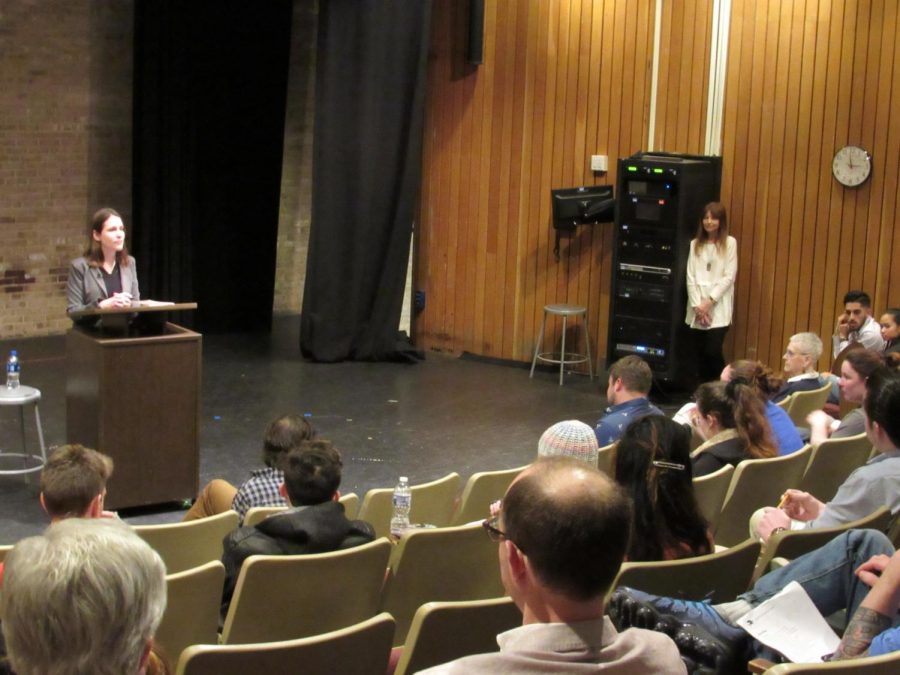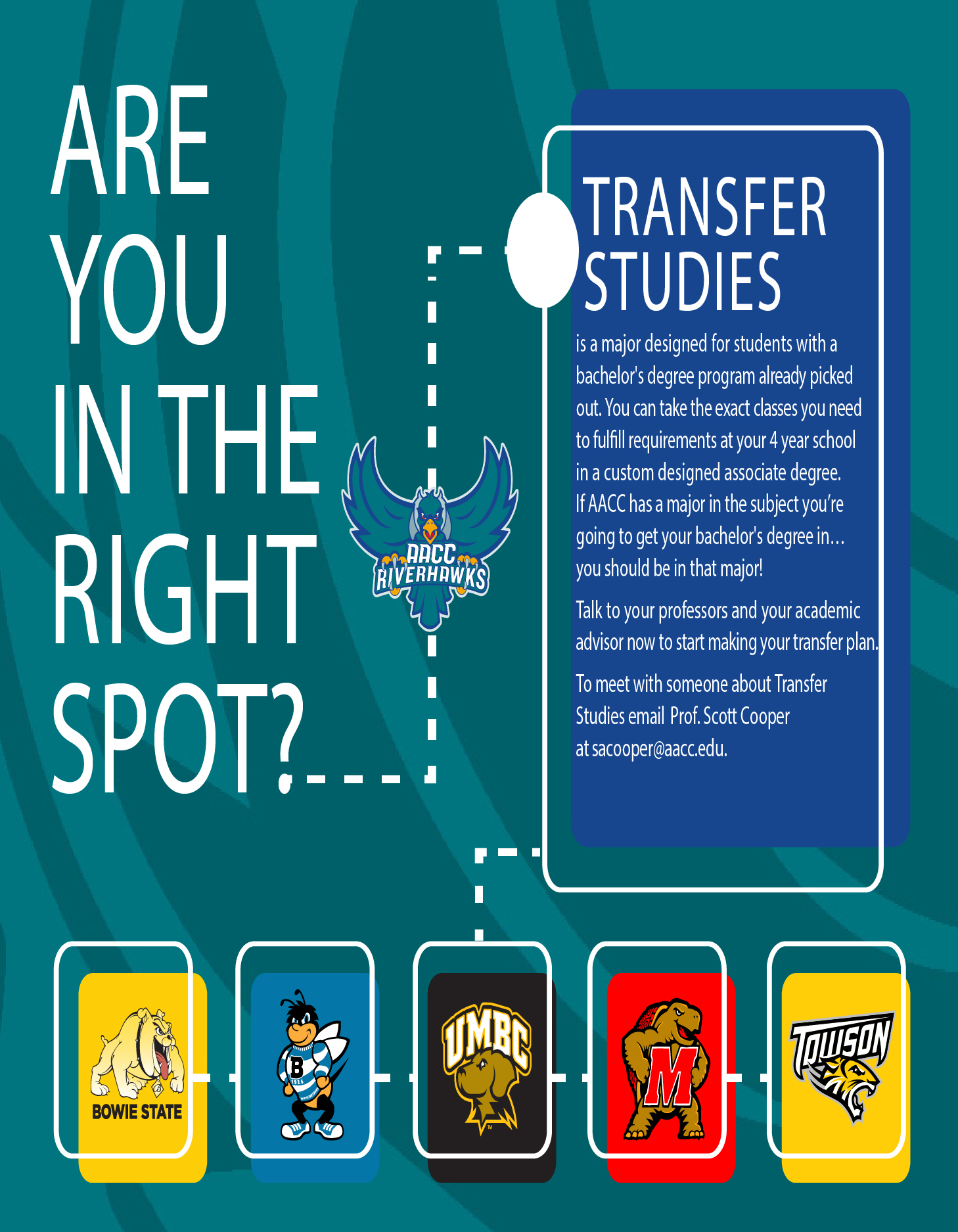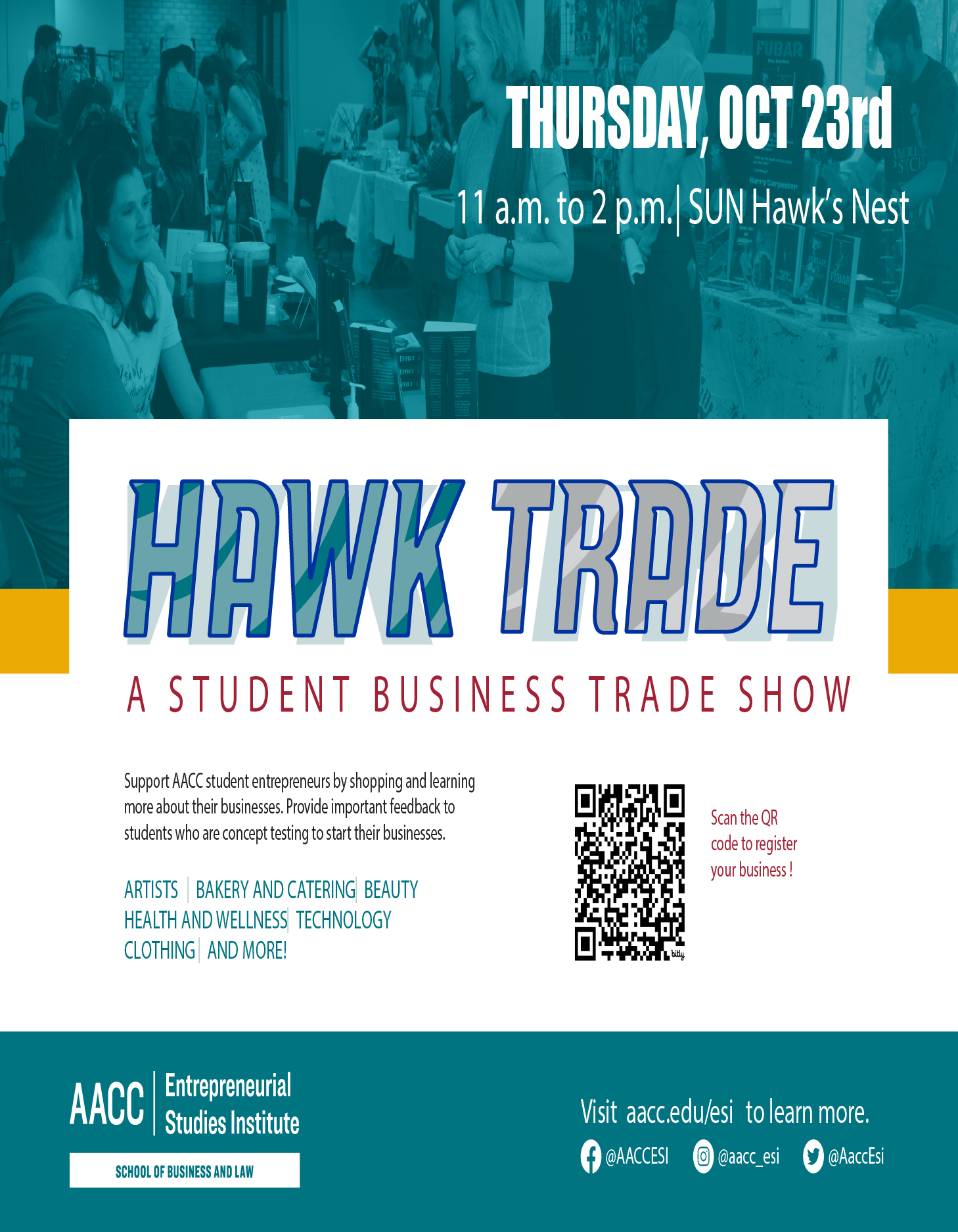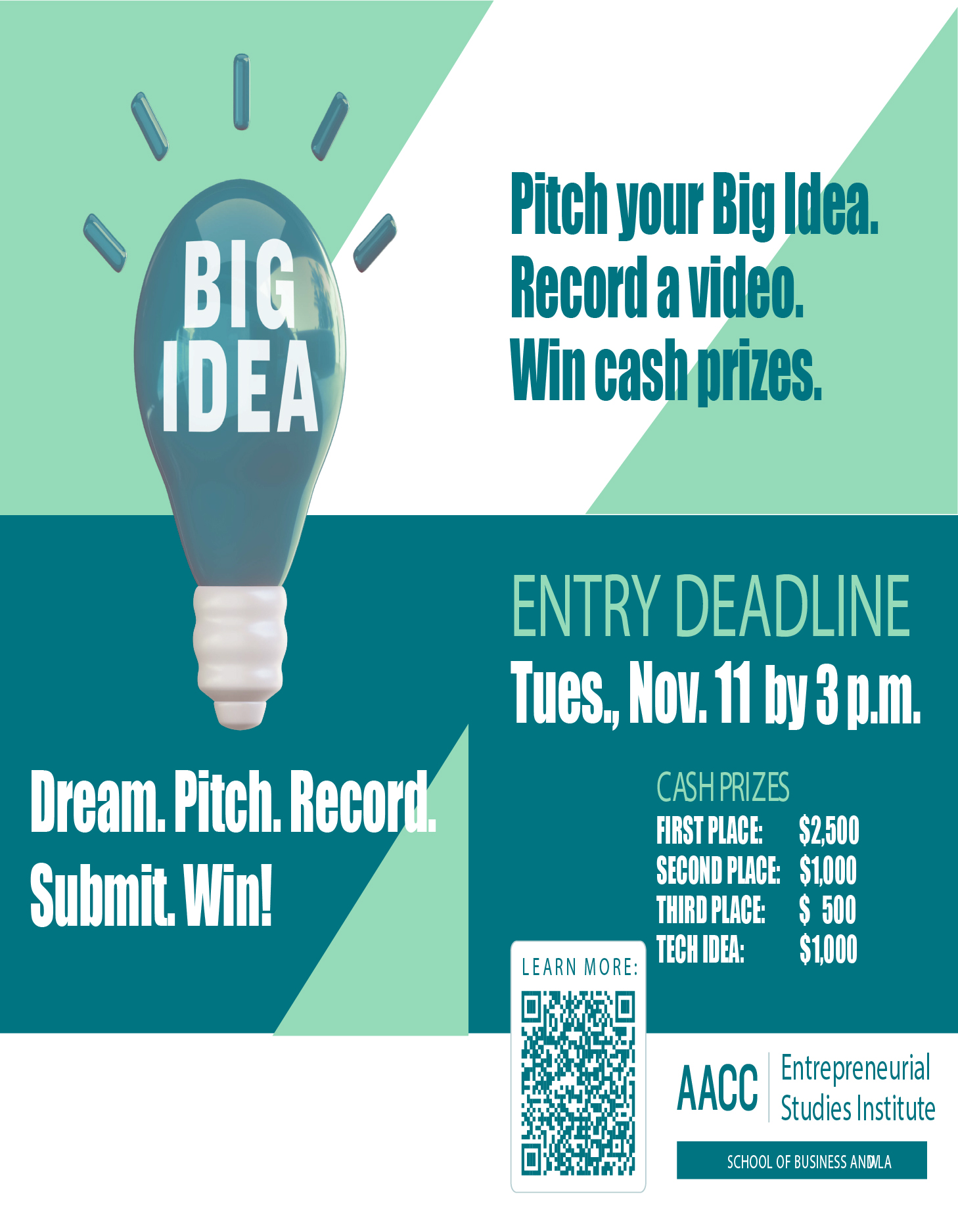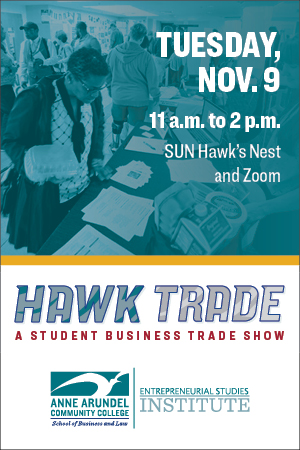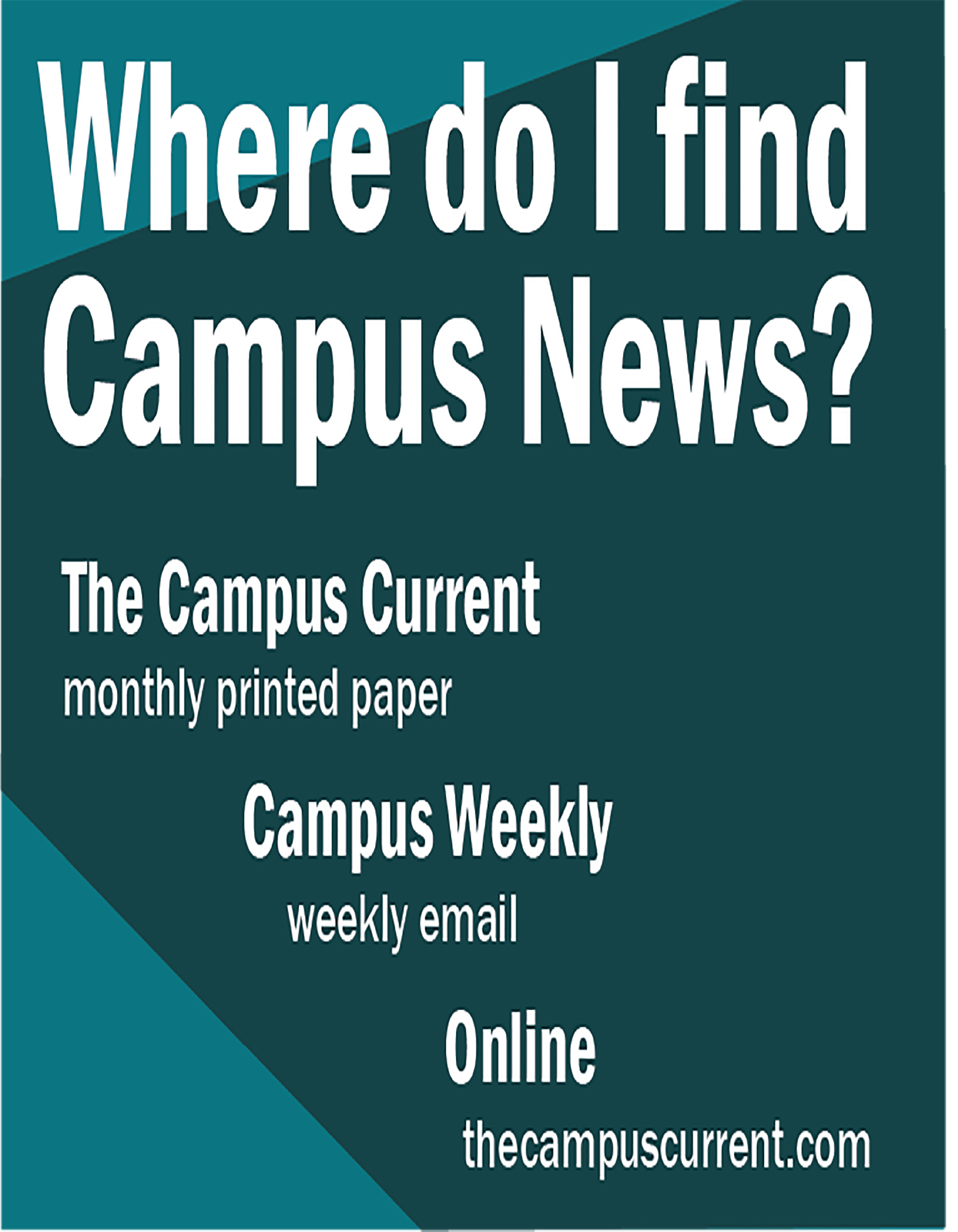Poet shares experience writing about nuclear devastation
Poet Tyler Mills speaks at yesterday’s Writers Reading event, which highlighted her work on nuclear devastation.
March 15, 2019
Tyler Mills, a guest poet, shared her work “Hawk Parable” with faculty and students yesterday at the first Writers Reading event of this spring semester.
Mills stunned the audience with her vivid images relating the horrors of nuclear testing.
“‘A doctor would look at them and they would die,’” she read, moving from simple yet painful statements to those that were beyond imagination. “‘Three girls extended their arms…the wind sheared — not seared — their flesh.’”
The audience listened in awed silence while she told of the inspiration for her work, finding a picture of an atomic mushroom cloud among her late grandfather’s pictures.
Mills stated while her grandfather never directly spoke of involvement in the bombing of Nagasaki during World War II, he alluded to it. The finding of the picture added a significant piece to what she called, “the family mystery.”
“The mystery is exactly how he was involved,” Mills said.
“The guilt is how this is a family story as well as history. The question is how to ethically bring up a subject that is painful,” she added.
Mills’ work also connects the past and the present in that she still lives in Los Alamos, New Mexico which was the site of historical nuclear testing.
She stated despite the current test-ban treaties, recently “there was a huge test [in the area] and they did not tell us, but there was a huge shockwave that rippled through the community … I’m going to write an essay about that.”
Madison Likens, a second-year psychology student studying art therapy, asked Mills why color was such a vivid part of her disturbing poetry.
“Color is a part of who I am as an artist,” Mills explained. “But so many of these images are so horrifying that we don’t want to see them anymore. I wanted to use color as a way to invite us to look at it again, without pushing [the reader] away.”
Rae Supko, a second-year creative writing major, asked if Mills ever wanted to “give up or stop because of how emotional” the work became.
Mills answered, “Absolutely. I found myself moving into working on visual projects as a way to deal with the [research and poetry]. I had to take a step back, so I made collages for a while.”
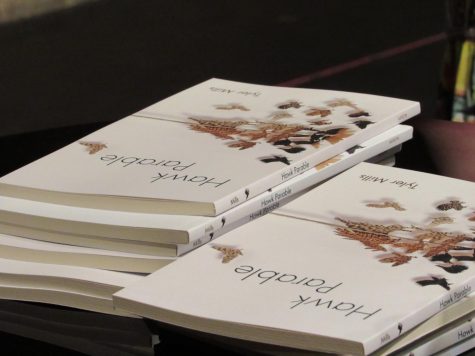
Jackson Williams, a second-year visual arts student, noted that Mills’ work was going to have a lasting impact on him. He wondered what was something about her research that was going to stick with her.
“The survivor accounts,” Mills responded. “And the imagery of the tests. I guess I’m still haunted by those images.”
“Is it cathartic for you to write these stories?” asked Ken Roy, a second-year pre-med student.
“There is like this … guilt, and family taboo,” Mills admitted, speaking again of her grandfather’s possible involvement in the Nagasaki bombing. “And this feeling that I needed to do that research.”
When the event ended, students were eager to share with Mills how moved they were by her work.
Brady Loveless, a second-year transfer studies student, said he really enjoyed the performance.
“Really interesting topic,” he said. “I had never seen anyone write about that [topic] before. I liked the poem where she mentioned the swimming pool and the people holding up their hands while the bombs were falling. It was very powerful.”
Shahmeer Khan, a second-year pre-med student agreed: “Really good. Really entertaining performance. The image of the bomb falling was really interesting.”
Mills was equally moved by the insightful questions and responsiveness of the audience.
“I have spoken on campus before,” she said. “But I was impressed by the level questions and discussion … I feel like I am leaving with ideas.”
Creative writing program professors Susan Cohen and Garrett Brown watched the interactions with smiles, a central purpose for the series having been achieved.
The next Writers Reading event is scheduled for April 18.



